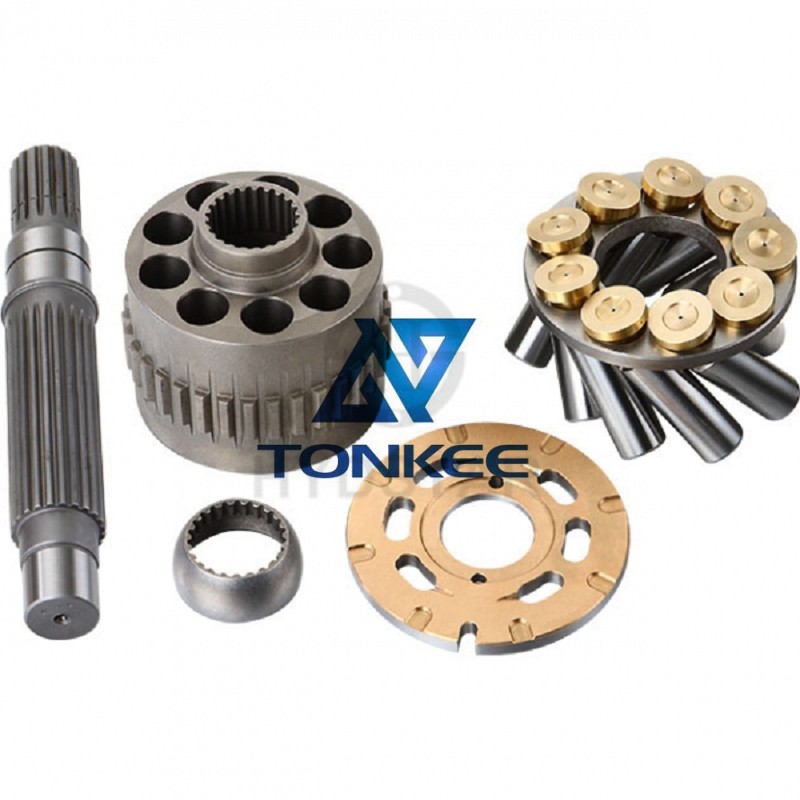
Housing and Casing: The pump's housing and casing are typically made from high-quality materials, often cast iron or aluminum, to ensure durability and resistance to corrosion.
These components encase the internal parts of the pump, providing structural support and protection.
Piston Assembly: The heart of the EX100 series pump is its piston assembly. It consists of a piston rod, piston head, and seals. The piston assembly is responsible for generating hydraulic pressure by reciprocating within the cylinder block.
Cylinder Block: The cylinder block contains multiple piston cylinders. It is designed to withstand high pressure and temperature, ensuring efficient and consistent fluid displacement.
Valve Plate: The valve plate is a crucial part of the pump that controls the direction of fluid flow. It has various ports and valves that help in the intake and discharge of hydraulic fluid.
Valve Plate Springs: Valve plate springs are used to maintain the necessary pressure on the valve plate, ensuring that it functions correctly and directs the fluid appropriately.
Swash Plate: The swash plate is responsible for regulating the piston's stroke length. By altering the angle of the swash plate, the pump can control the pump's output flow and pressure.
Bearings and Bushings: Bearings and bushings are used to reduce friction and maintain smooth piston movement. They are crucial for extending the pump's lifespan and ensuring its efficiency.
Shaft: The pump's shaft connects the piston assembly to the input shaft, allowing the rotary motion of the input shaft to be converted into the reciprocating motion of the pistons.
Input Shaft: The input shaft is connected to the power source, such as an engine or an electric motor.
It provides the necessary rotational force to drive the pump.
Seals and O-Rings: Seals and O-rings are used throughout the pump to prevent hydraulic fluid leakage. They ensure that the pump maintains pressure and efficiency.
Port Connections: The pump features inlet and outlet ports for hydraulic fluid. These ports are typically standardized to facilitate easy integration into hydraulic systems.
Pressure Relief Valve: Many pumps in the EX100 series have an integrated pressure relief valve that protects the pump and the system from overpressure situations.
Mounting Flange: The mounting flange allows for secure attachment of the pump to the equipment or machinery, ensuring stability during operation.
Suction Strainer: Some EX100 series pumps include a suction strainer or filter to prevent debris from entering the pump, which can cause damage to internal components.
Paint and Coatings: The exterior of the pump is often coated with paint or corrosion-resistant coatings to protect it from environmental factors and ensure a longer service life.



 English
English Русский язык
Русский язык



